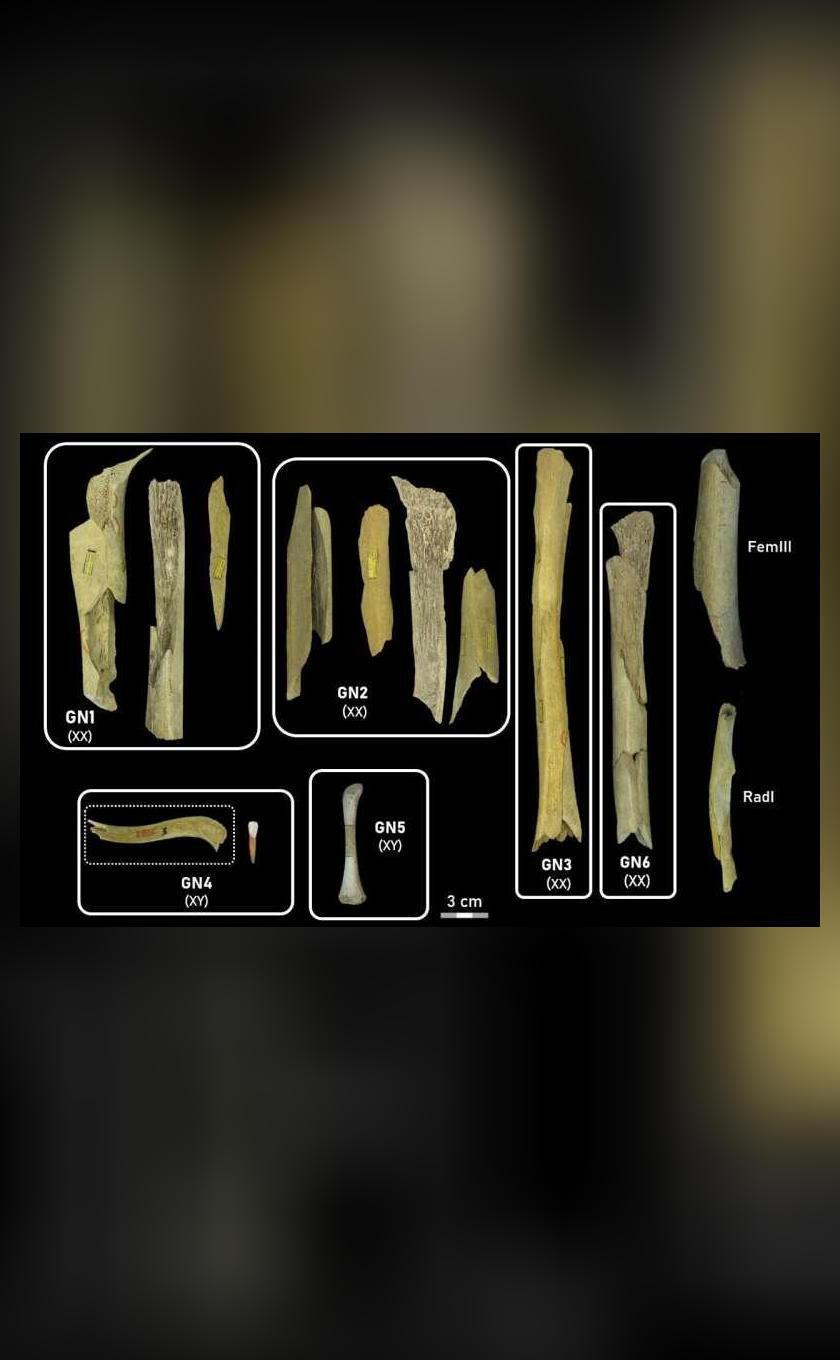
Neanderthals ate outsider women & children 45,000 years ago: Study
A recent study has shed new light on the behavior of Neanderthals, our ancient human relatives, revealing a dark and unsettling aspect of their society. According to a study of human remains found in Belgium’s Goyet cave system, Neanderthals engaged in cannibalism, specifically targeting women and children from other communities, around 45,000 years ago. This discovery has significant implications for our understanding of Neanderthal behavior and the social dynamics of early human societies.
The study, which analyzed 101 bone fragments, found that the remains exhibited butchery marks similar to those found on animal bones. This suggests that the Neanderthals treated the human bodies in a similar way to how they would treat animal carcasses, cutting and processing the flesh for consumption. The presence of these butchery marks is a clear indication of cannibalism, and the fact that the victims were primarily women and children is a disturbing aspect of this discovery.
The researchers believe that this cannibalism was linked to territorial conflict, which was likely exacerbated by the decline of Neanderthal populations and the expansion of Homo sapiens into nearby regions. As Neanderthal groups competed for resources and territory, they may have turned to cannibalism as a means of asserting dominance and eliminating potential threats. The fact that women and children were targeted suggests that Neanderthal groups were seeking to weaken their rivals by killing off their most vulnerable members.
This study provides a unique glimpse into the social dynamics of Neanderthal societies, which were likely characterized by high levels of violence and competition. The fact that cannibalism was practiced, even if it was not a widespread or regular occurrence, highlights the harsh and unforgiving nature of life in the Paleolithic era. The discovery also raises important questions about the evolution of human behavior and the development of social norms and cultural values.
The Goyet cave system, where the remains were found, is a significant archaeological site that has yielded a wealth of information about Neanderthal behavior and culture. The cave system has been the subject of extensive excavations and research, and the discovery of these human remains is a major breakthrough in the field of paleoanthropology.
The study’s findings are based on a thorough analysis of the bone fragments, which included cutting marks, scraping marks, and other signs of butchery. The researchers used a range of techniques, including microscopic analysis and 3D modeling, to reconstruct the processing of the human bodies and identify the tools used to cut and scrape the bones. The results of this analysis are conclusive, providing strong evidence of cannibalism and shedding new light on the behavior of Neanderthals.
The discovery of cannibalism among Neanderthals is not entirely unexpected, as there have been previous findings suggesting that this behavior may have occurred in certain contexts. However, the scale and nature of the cannibalism revealed by this study are significant, and the fact that women and children were targeted adds a new layer of complexity to our understanding of Neanderthal society.
The study’s authors suggest that the cannibalism may have been a response to the decline of Neanderthal populations, which were likely under pressure from the expansion of Homo sapiens into Europe. As Neanderthal groups competed for resources and territory, they may have turned to cannibalism as a means of asserting dominance and eliminating potential threats. This theory is supported by the fact that the remains found in the Goyet cave system date back to a period of significant change and upheaval in the region.
In conclusion, the discovery of cannibalism among Neanderthals is a significant finding that sheds new light on the behavior and social dynamics of our ancient human relatives. The fact that women and children were targeted suggests a level of violence and competition that is disturbing, but also provides a unique glimpse into the harsh realities of life in the Paleolithic era. As we continue to learn more about Neanderthal behavior and culture, we are reminded of the complexity and diversity of human societies, and the many ways in which our ancestors adapted to their environments and interacted with one another.
For more information on this study, please visit: https://phys.org/news/2025-11-neanderthal-women-children-victims-cannibalism.html






